
KYOCERA @ CES 2020
AI Solutions
Artificial intelligence (AI) technology is essential for Advanced Driver Assistance Systems (ADAS) and autonomous driving. Kyocera’s miniature camera module equipped with integrated AI capabilities to detect nearby pedestrians and other vehicles. A digital demonstration allowing visitors to interact with the high-precision AI camera as it recognizes human movement and objects.
AI Camera
Camera with AI object and free space detection
-
01Features
- - Automotive camera with high-performance AI object and free space detection
- - New ASIC enables compact design and low power consumption
* Joint development with MediaTek Inc.
-
02Product Specs
- - Camera size : 32x24x64 mm
- - Field of view : Horizontal 190 degrees
- - Resolution : 1280x960 pixels
- - Processing speed : 30 fps
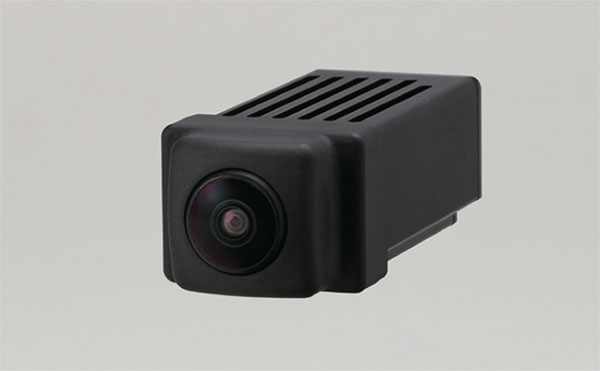
Al Camera -
03Applications
Object Detection(Pedestrians, Cars, Motorcycles, Bicycles)
- - Automotive sensing view camera for ADAS
- - Traffic monitoring camera for ITS roadside systems
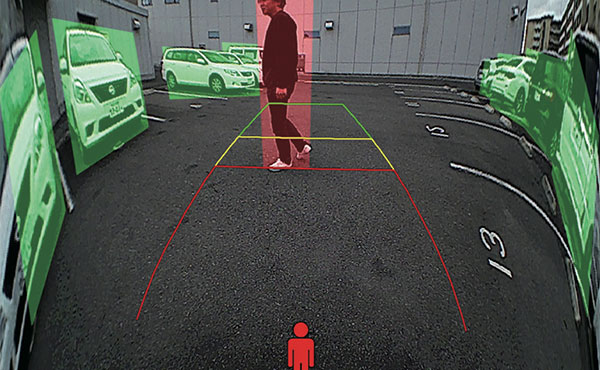
Object Detection
(Pedestrians, Cars, Motorcycles, Bicycles)Free Space Detection
- - Collision avoidance with general obstacle detection
- - Self-parking system in available parking spaces
- - Applications for personal mobility and intelligent robots
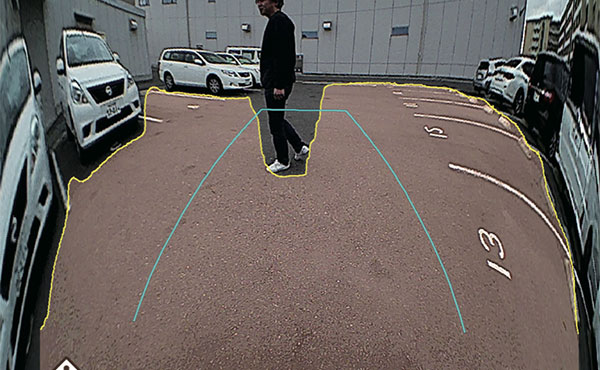
Free Space Detection -
Click here to download (3.9MB)
*For the above product information panel
-
Interview
Kyocera Article - AI Camera
Kyocera introduces cameras that can detect when the way is clear, and when it isn’t
“Existing cameras haven’t been developed using neural networks, so they simply can’t do what this one can. It’s capable of detecting vehicles, bicycles, pedestrians, or even children through deep learning.” Takashi Maekawa, Leader of the AI Camera Development Team at the ADAS Technology R&D Laboratory at Kyocera, introduces the result of his team’s work: a Kyocera-exclusive AI Recognition Camera that has been taught how to examine its surroundings and not only warn drivers of when there is something in the way, but also inform them of when there is space available for them to park.
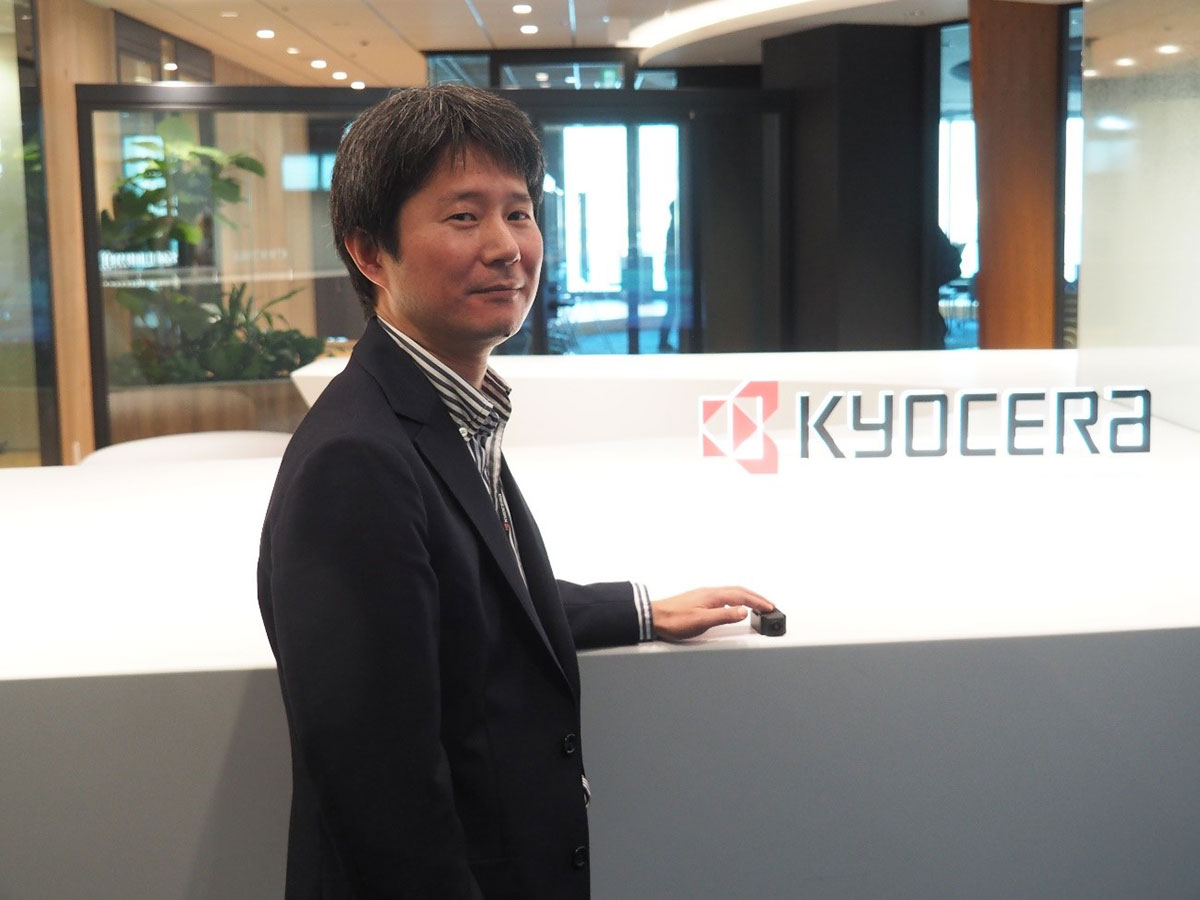
Takashi Maekawa, AI Camera Development Team Leader at Kyocera’s ADAS Technology R&D Laboratory, shows off his team’s very compact AI Recognition Camera Teaching a camera through deep learning
Kyocera’s ADAS (Advanced Driver Assist Systems) division has been developing a wide range of technologies to improve safety and convenience for everyone on the road, and the AI Recognition Camera is one of their latest innovations. Unlike traditional mounted cameras that simply show drivers what is around them, this camera is able to recognize what it sees. It has been able to achieve this through the use of deep learning. Deep learning is a process through which a complex computer algorithm is provided with huge amounts of data – in this case, images of roads and parking areas – and is steadily refined until it can reliably classify what it is looking at. “Using deep learning to create an algorithm base, it is able to recognize pedestrians, motorcycles and bikes, and other vehicles,” Mr. Maekawa explains. “In addition, it is capable of free space detection, allowing it to recognize open spaces, including available parking spaces.”
Detecting when the way is clear, and when it isn’t
Parking assistance has been around for some time, but up to now has been very limited in its capabilities. In particular, existing systems can only recognize parking spaces by seeing clearly painted lines. This means that they are rendered useless by old and worn parking lots, parking lots without paint, or weather conditions like rain or snow. In contrast, Kyocera’s AI Recognition Camera is capable of locating spaces and assisting with parking even if there are no lines marking the space. “Because existing systems do not have a neural net base, they can’t do this at all. This capability is exclusive to Kyocera.“
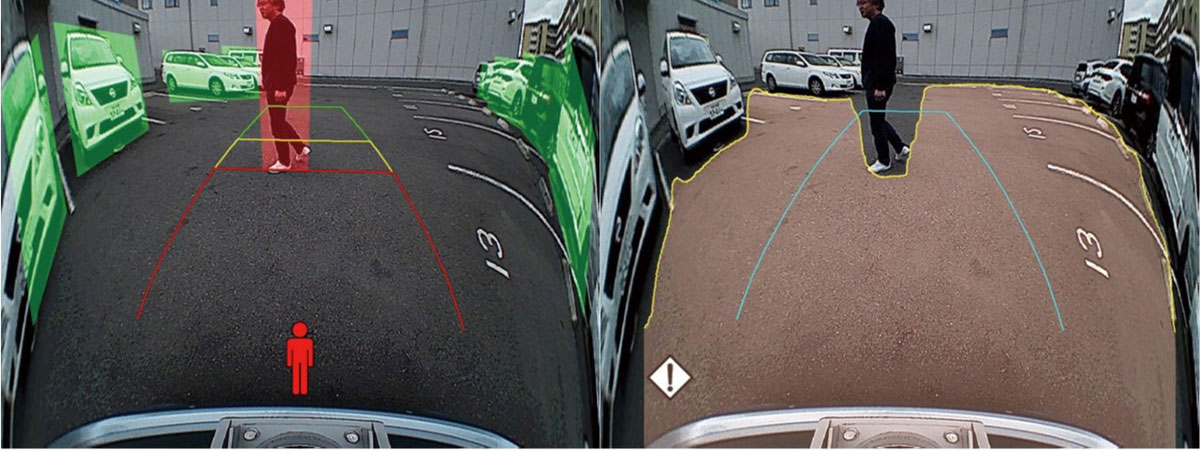
The AI Recognition Camera detecting pedestrians and other objects in its path (left), and detecting free space around it (right). The Kyocera AI Recognition Camera is also much better at object recognition than existing cameras that haven’t been developed using deep learning. “The AI is capable of recognizing a wide range of objects,” says Mr. Maekawa, “making it much more robust for handling a range of situations. It can even detect small objects such as a child sitting on the ground, and warn the driver.” This helps to make the roads safer not just for drivers, but for everyone else as well.
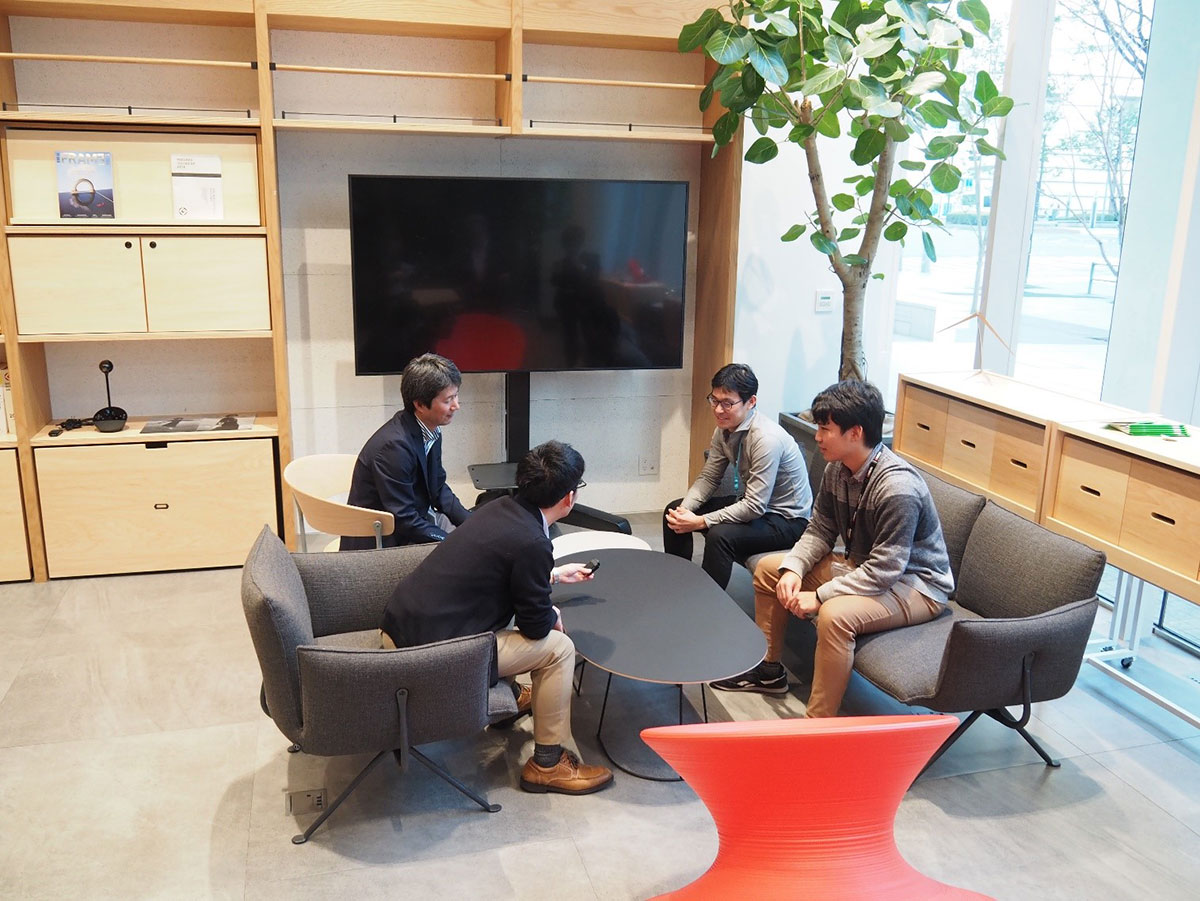
Mr. Maekawa and his team at the “Creative Fab” space in Kyocera’s new Research Center in Yokohama, discussing the development of the AI Recognition Camera “Normally this kind of process is done with a very large-scale computer,” he continues. “For these applications, however, we of course needed to make it smaller. To achieve this, we used a new type of ASIC (application-specific integrated circuit) dedicated to image recognition with a highly efficient algorithm, which made it possible to make the unit much more compact.”
Mr. Maekawa and his team at Kyocera are continuing to refine the AI Recognition Camera, looking ahead toward the time when it will be integrated into a system of cameras to be used on autonomous vehicles. The camera can also be put to use in other applications, like on construction vehicles, in guidance systems for robots, and on personal mobility devices such as wheelchairs. This technology will be an important step toward a future of intelligent devices that make the world safer and more comfortable for everyone.

